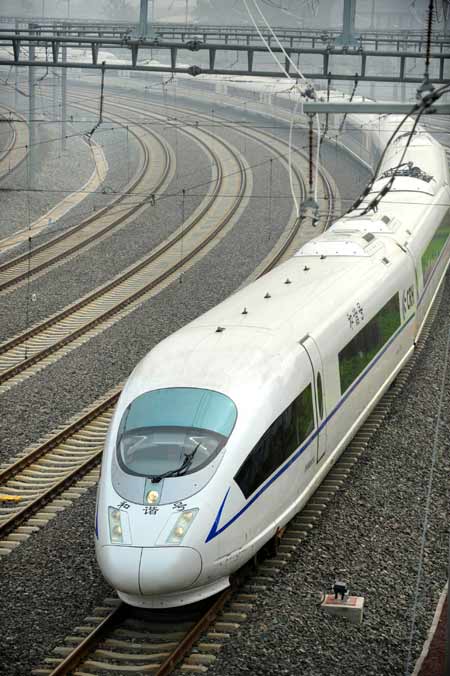Economy
High-speed train opens corridor of opportunities
(China Daily)
Updated: 2011-07-01 08:11
 |
Large Medium Small |
 |
Jinan, the Shandong capital, has already got a grand twin-towered commercial complex planned around its train station in anticipation of increased traffic.
Furthest down the Shandong section of the line, Zaozhuang is hoping that the rail will revive awareness of its history and products, currently coal and pomegranates. It is a little ancient city dating back to the Spring and Autumn Period more than 2,700 years ago, and was home to Mozi, another famous Chinese thinker who lived during the time of the Warring States (476-221BC).
Besides the convenience of travel, the trains will also help better integrate the coastal trading and manufacturing centers with the business hubs. In the north, they offer Beijing a quick second route to Tianjin port, and will probably help raise property prices in the relaxed Hebei suburb of Langfang, now only 15 munites away from the crowded Chinese capital.
Zooming through Shandong, businesses based in Beijing will now find it easier and quicker to connect with manufacturing centers in Jiangsu, including Nanjing and Zhenjiang. Of course, the same applies for those working out of Shanghai.
If you do an online search on Bengbu, the results in English may not tell you much about this Anhui city. But remember the name. It is second only to the capital Hefei as one of Anhui province's important centers for research and development and it once enjoyed prominence in the early days of rail travel.
Its fortunes had dipped somewhat as highways replaced trains during the hectic progress of 30 years of reform post-1980s, but now Bengbu is reviving like parched grass after rain, as high-speed train travel shifts the focus to the city once more.
The High-speed Rail is not just changing the cities along its path, but it also has an economic ripple effect on the people, especially those who had to travel far to earn a living previously.
Now, some migrant workers are returning home, like Ding-yuan villager Liu Xiaodong who found work as a security guard along the railway track. Now he can be with his family and see his children every day, a rare luxury in the days when he had to labor in Shanghai.
Fresh job opportunities will also come as visitors and investments explore the cities along the route, now so much more accessible and in much quicker time. The landscape will change, and it will be more than physical.
| 分享按鈕 |




